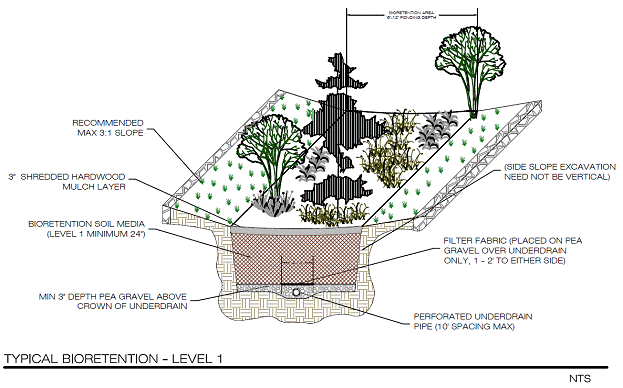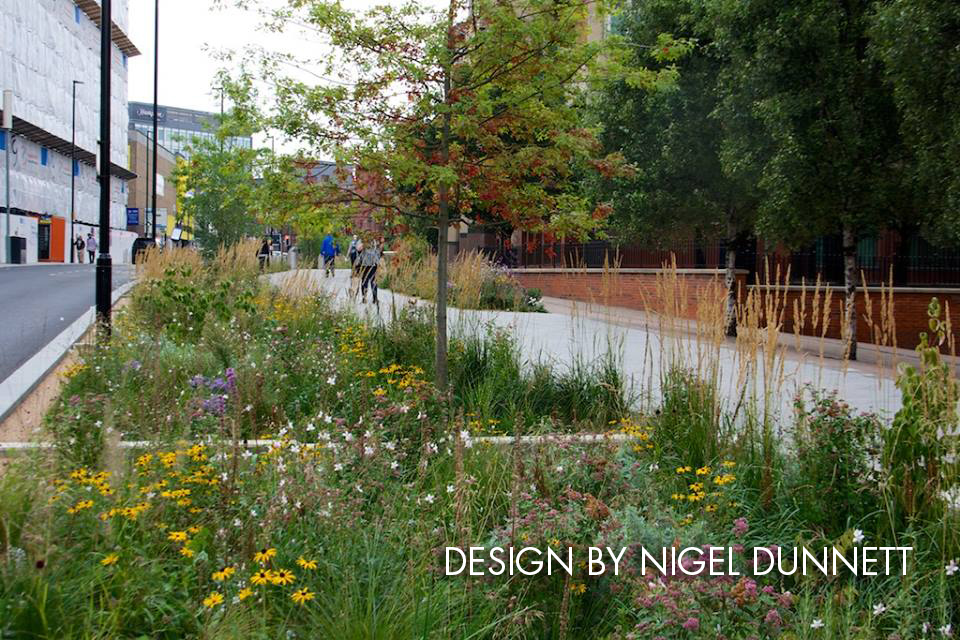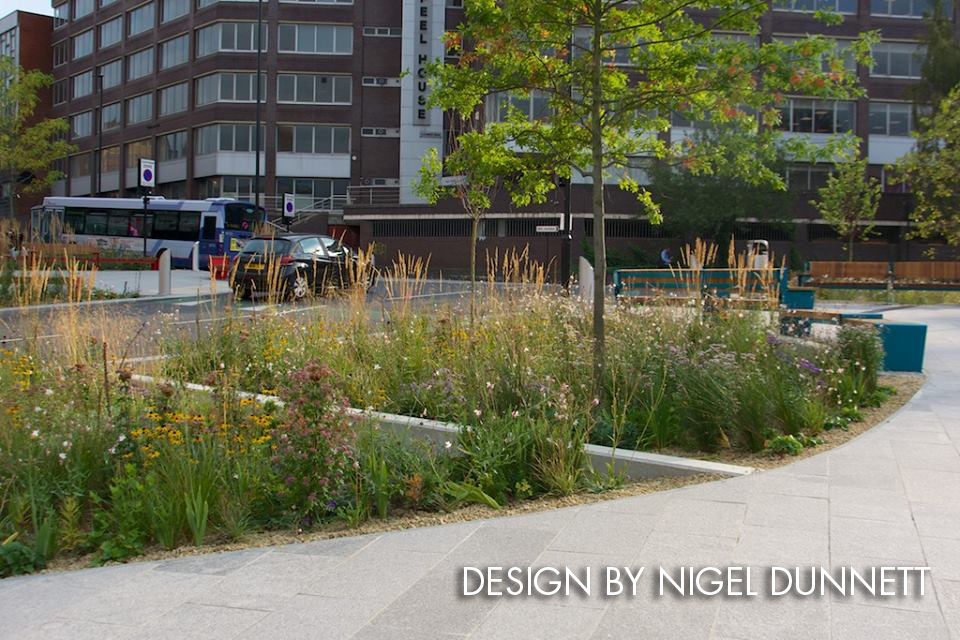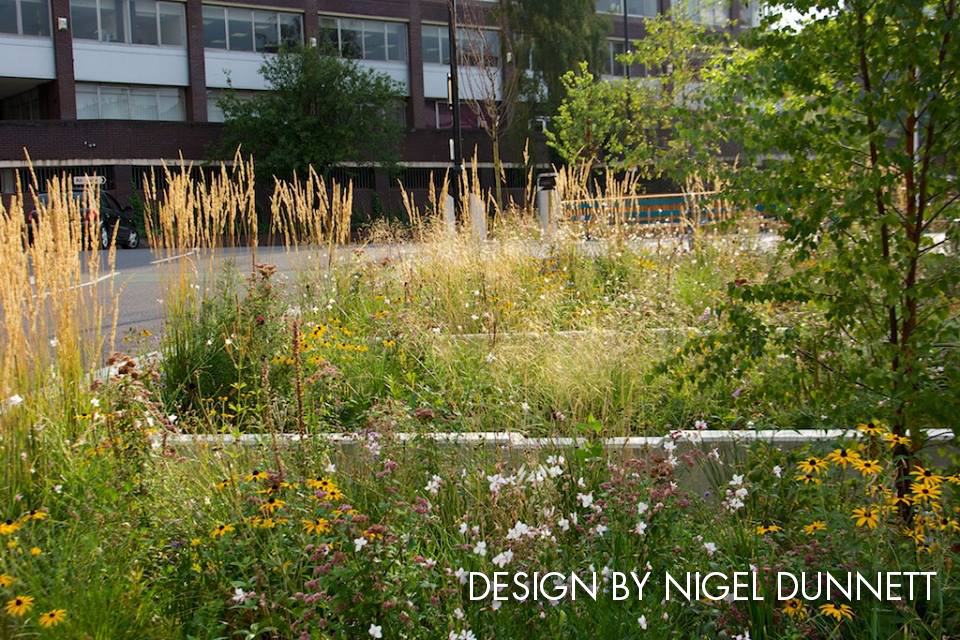Not treating plants as dynamic systems is the culprit. MUnicipalities need to turn to experts in plant community design.
For the past few years, I have been focused on the development of high performance vegetative systems. These systems are critical to the future of our planet, because as we urbanize, we need resilient plant systems to cover our roofs, clean our stormwater, sequester carbon, feed pollinators, and delight humans. The benefits are enormous, yet the fact is, getting the planting right is incredibly complicated.
The problem is that the vast majority of green infrastructure plantings have failed. In fact, the very standards that regulate these facilities guarantee that the plantings will fail both functionally and aesthetically. This fact was highlighted in an article this week in The New York Times, "To the City a Pollution Fighter. To Some Residents, an Eyesore." As cities push to expand these facilities throughout cities, some residents aren't so impressed. And who can blame them? Many of these facilities have poorly designed forebays, so they are filled with trash. And the bigger issue is that while the soil, pipes, and structures themselves are highly engineered, the planting is almost always an afterthought. Too few municipalities treat the planting as an integral element in the functionality of the system. The main driver in plant selection is minimizing maintenance for the municipal crews who take care of them--crews who often have little horticultural knowledge (or if they do, they are trained as urban foresters, not in herbaceous systems). But the very standards aimed at minimizing labor create the conditions for increased maintenance.
"Plant Diversity is functional. It arms G.I. facilities with a range of benefits that ensure the vitality of the system."
There are several factors at play here. The first issue is cultural. Few folks in charge of these facilities see plants as technology or systems that need to be engineered. Instead, plants are treated as horticultural objects. It is the soil or mulch--not the plant roots--they think is responsible for the functionality of the system. And while soil and mulch do act as filters, this mindset ignores a growing body of literature that suggest that density and diversity of roots (particularly herbaceous roots) play a major role in filtration, water uptake, transpiration, and erosion control. Many green infrastructure standards only require a handful of shrubs in a sea of mulch. And because these facilities are so grossly under-vegetated, scouring rains or heavy inflows of salt or urban pollutants kill the few plants in the pits.
A traditional approach to green infrastructure arranges plants as objects in a sea of mulch; the better approach is to create a diversity of plants interwoven together as shown in the design on the right by Claudia West in Lancaster, PA. This requires the right horticultural expertise, but the benefits are vast.
Here's an example of a standard that perpetuates the notion of plants as objects in a sea of mulch. Designs like this require constant re-applications of mulch or hand-weeding for the life of the facility--creating high labor and costs for municipalities.
The second factor is a skepticism toward plant diversity and density. I recently had a reviewer for a large scale green infrastructure facility tell me that there can be no more than three species in a facility. Only three species! The goal of limiting diversity was a perception that it would create less maintenance. But limiting diversity does just the opposite. Diversity is functional. Bioretention plantings--particularly in small urban pits--need a lot of different plants woven together in tight mosaics to be effective. There are dry rims in the upper part of these facilities, moist centers, and really wet areas near outflows or drains. This wide diversity of hydrologic conditions in a small area means that monocultures of single species are rarely effective. Diversity also arms a G.I. facility with a range of different benefits: cool-season growers that hold the soil in winter, warm-season growers that tolerate drought, short-lived plants that reseed and fill gaps, long-term plants that create stability, deep rooted plants that act as a sponge, shallow rooted plants that resist erosion. No three species can do all of this; twelve to twenty species are needed to do this. Of course, the trick in designing these systems is to make diversity look good. This can be done by limiting the height of a planting or creating seasonal spectacles with repetition of flowers. New techniques for management (not maintenance) need to be taught to show how these systems can require less input than traditional plantings.
The solution is that municipalities need to hire the right consultants--experts in plant community design--to re-write green infrastructure planting standards, design the plantingS, & TRAIN MAINTENANCE CREWS
Finally, these facilities fail because they do not relate to people. The plantings are not always contextual; they are rarely beautiful. Twice this year I've had the pleasure of speaking with Nigel Dunnett, one of the world's leading experts in plant-community design. In these talks, he showed a recently installed project in London called the "Grey to Green" project. The plantings were not yet mature, but the focus on color and beauty was already apparent. Like so many of his projects, Nigel understands that functional, ecological plantings must also be gorgeous. Projects like this were not met with disdain or NIMBY-ism, but celebrated by both municipalities and the public.
The solution is that municipalities need to hire the right consultants--experts in plant community design--to re-write green infrastructure planting standards. This kind of planting needs special skills and specialized knowledge, both for design and for long-term management. This is not traditional landscape architectural planting design. Engineers and landscape architecture are important leaders in making green infrastructure happen. But it is my hope that they realize the need for a new kind of expertise--a hybrid of horticulture and ecology--to develop the next generation of green infrastructure.





